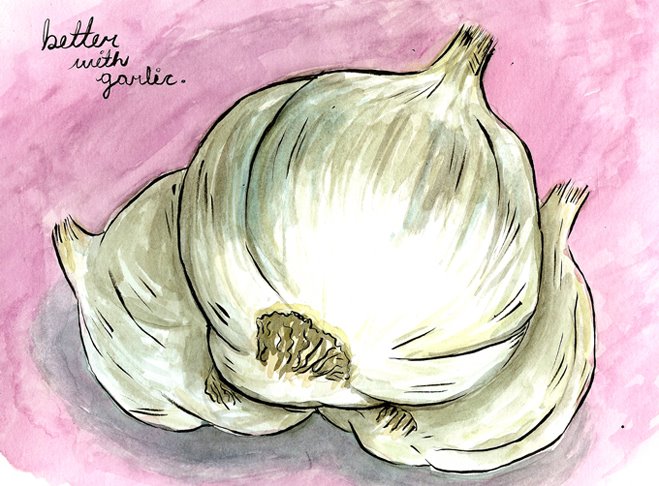This one was the first recipe Aaron saw in Ad Hoc at Home that he really, really
wanted to try. There are a lot of steps, so make sure you get yourself
organized well ahead of time before digging into this one. It is very, very
delicious though and Aaron and I were very impressed with the results as were
Corey and Brian. Best part of this?
Corey is not much of a fried chicken fan, but enjoyed this meal. If you’ve been
disillusioned by fast food fried chicken, I think this will change your mind.
I’m listing a quarter recipe of Thomas Keller’s brine below, but because Aaron
wasn’t a big fan of it, you can use any brine you normally use with poultry. Do
stuff to your taste. I’m also doing a half recipe as that is what we did. I normally
list a full one, but I think you all can figure this out. This makes more than
enough chicken by itself.
Buttermilk Fried Chicken from Ad Hoc at Home:
Serve 4 to 6
4 lb. chicken
For the brine-
1 lemon, halved
6 bay leaves
¼ bunch flat leaf parsley
¼ bunch thyme
2 Tb. honey
¼ head of garlic
Handful peppercorns
½ c. kosher salt
½ gallon water
For dredging and frying-
Peanut or canola oil
½ qt. buttermilk
Kosher salt and freshly ground black pepper
For the coating-
3 c. flour
2 Tb. garlic powder
2 Tb. onion powder
2 tsp. paprika
2 tsp. cayenne
2 tsp. kosher salt
½ tsp. freshly ground black pepper
Sea salt or kosher salt for garnish
To make the brine, combine all of the ingredients
in a large pot, cover, and bring to a boil. Boil for 1 minute, stirring to
dissolve the salt. Remove from heat and cool completely, then chill before
using. The brine can be refrigerated for up to 3 days.
Cut the chicken into 10 pieces: 2 legs, 2 thighs,
4 breast quarters, and 2 wings. Pour brine into a container large enough to
hold the chicken piece, add in the chicken, and refrigerate for 12 hours only.
Remove the chicken from the brine and discard the
brine. Rinse the chicken under cold water, removing any herbs or spices
sticking to the skin. Pat or let air dry. Let rest at room temperature for 1½
hours, or until it comes to room temperature.
If you have 2 large pots, about 6” deep, and a lot
of oil, you can cook the dark meat and the white meat at the same time; if not,
cook the dark meat first, then turn up the heat and cook the white meat. Aaron
did the latter method. No matter what size pot you have, the oil should not
come more than 1/3 the way up the sides of the pot. Fill the pot with at least
2” of oil and heat to 320 degrees. Set a cooling rack over a baking sheet. Have
a second baking sheet ready.
Meanwhile, combine all of the coating ingredients
in a large bowl. Transfer half the coating to a second large bowl. Pour the
buttermilk into a third bowl and season with salt and pepper. Set up a dipping
station: the chicken pieces, one bowl coating, the bowl of buttermilk, the
second bowl of coating, and the second baking sheet.
Just before frying, dip the chicken thighs into
the first bowl of coating, turning to coat and patting off the excess; dip them
into the buttermilk, allowing the excess to run back into the bowl; then dip
them into the second bowl of coating. Transfer to the baking sheet. Your hands
will get messy, but it’s worth it.
Carefully lower thighs into the hot oil. Adjust
the heat as necessary to return the oil to the proper temperature. Fry for 2
minutes, then carefully move the chicken pieces around in the oil and continue
to fry, monitoring the oil temperature and turning the pieces as necessary for
even cooking, 11 to 12 minutes, until the chicken is a deep golden brown,
cooked through, and very crisp. Meanwhile, coat the drumsticks, and place on
the baking sheet.
Transfer the cooked thighs to the cooking rack
skin side up and let rest while you fry the remaining chicken. Putting the
pieces skin side up will allow excess fat to drain. Make sure that the oil is
at the correct temperature and cook the chicken drumsticks. When the drumsticks
are done, lean them meat side up against the thighs to drain, then sprinkle the
chicken with sea salt.
Turn up the heat and heat the oil to 340 degrees.
Meanwhile, coat the chicken breasts and wings. Carefully lower the chicken
breasts into the hot oil and fry for 7 minutes, or until golden brown, cooked
through, and crisp (as you will with all the pieces). Transfer to the rack,
sprinkle with salt, and turn skin side up. Cook the wings for 6 minutes or
until done as before. Transfer the wings to the rack and turn off the heat.
Rest the chicken for 7 to 10 minutes before
serving to allow it to all cool down. If it is too cool because of the timing
of cooking everything, place in a 400 degree oven for a minute or two so the
crust is crispy and the chicken hot.
We served these with biscuits, mashed potatoes,
and green beans. If you plan it out, this makes for a great weekend meal. At
the very least, it’s worth trying once.
.jpg)


















